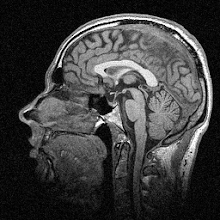How, if at all, does the accuracy and precision of this information vary across different tasks and limb configurations? To test this, the authors of today’s study got their participants to perform three experimental tasks that involved matching perceived limb position without being able to see their arm. In the first task, participants used a joystick to rotate a virtual line on a screen positioned over their limb until they decided that it was in the same direction as their forearm. In the second task, they used a joystick to move a dot around until they decided that it was over their index finger. In the third task, they again saw a virtual line on the screen, but this time they had to actively move their forearm until they decided they were in line with it.
The results were kind of interesting: in all three cases, participants tended to overestimate the position of their limbs when they were at extremes; i.e. when they were more flexed they assumed they were even more flexed, and when they were more extended they assumed they were even more extended. This is quite confusing to explain, but the figure below (Figure 4A in the paper) should help:
Estimates of arm position from one participant
The black lines are the actual position of the arm of a representative participant in task 1, with flexion on the left and extension on the right. Blue lines are the participant’s estimates of arm position, and the red line is the average of the estimates. You can see that when the arm is flexed the participant guesses that it’s more flexed than it actually is, with the corresponding result for when the arm is extended. The researchers found no differences in accuracy between the three tasks, but they did find differences in precision – participants were much more precise, i.e. the spread of their responses was lower, in the passive fingertip task and the active elbow movement task (tasks 2 and 3).
So what? Well, these results give us an insight into how proprioception works. The authors argue that the bias towards thinking you’re more flexed/extended than you really are comes from the overactivity of joint and skin receptors as the limb reaches its extreme positions. Why might these receptors become overactive at extreme positions? Possibly because it allows us to sense ahead of time when we’re getting to a point of movement that is mechanically impossible for the limb to perform, either because we’re trying to flex it too much or we’re trying to straighten it too much. Push too hard at either extreme – muscles are quite strong – and you could damage the limb. Better for the system to make you stop pushing earlier by giving you a signal that you’re further along than you thought. I think it’s a nice hypothesis.
I quite like this study, as it’s another one of those not-wildly-exciting-but-useful-to-know kinds of papers. While the wildly exciting stuff is great, I think that too often the worthy, low-key stuff like this is unfairly overshadowed. Science is about huge leaps and paradigm shifts much less than it’s about the slow grind of data making possible incremental progress on various questions. And I’m not just saying that because that’s what all my papers are like!
---
Fuentes, C., & Bastian, A. (2009). Where Is Your Arm? Variations in Proprioception Across Space and Tasks Journal of Neurophysiology, 103 (1), 164-171 DOI: 10.1152/jn.00494.2009
Image copyright © 2010 The American Physiological Society


"Why might these receptors become overactive at extreme positions? Possibly because it allows us to sense ahead of time when we’re getting to a point of movement that is mechanically impossible for the limb to perform,..."
ReplyDeletePretty much my thought when I read the question. After I had some surgery in the 70's, I went to a gym to work out. On one machine, I was told to never, ever fully extend my knees as it would damage them. So when I read the question, I thought of how forceful extension could/would cause damage to connectivity tissue, or, joints themselves. So it would make sense for us to 'sense' ahead of time when we are near to causing damage.
Our brains are rather clever that way. ;)
Pretty clever yes! One interesting question from my perspective is precisely how the system ended up working that way. It seems like it would be an evolutionarily useful thing to have happen.
ReplyDeleteThese findings could be a good metaphor for futurists who like to lecture about the importance of foresight!
ReplyDelete